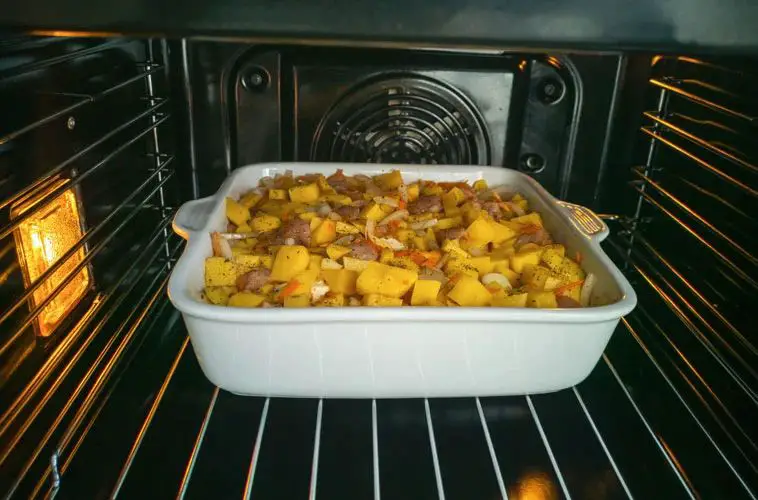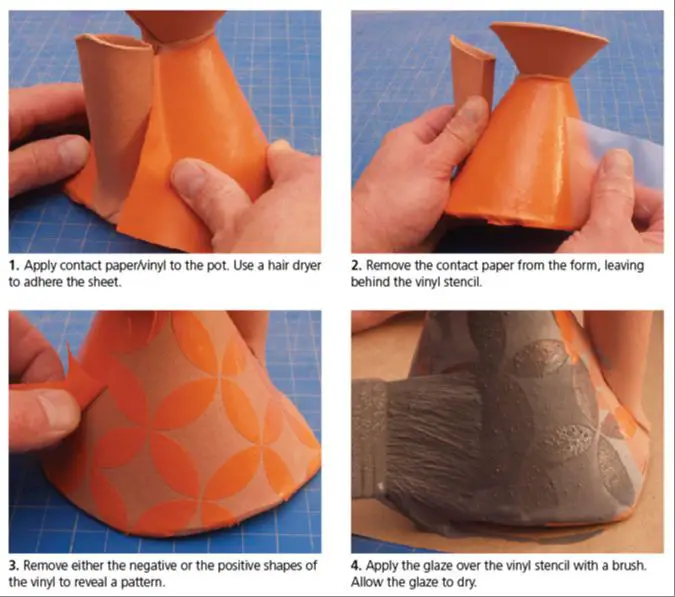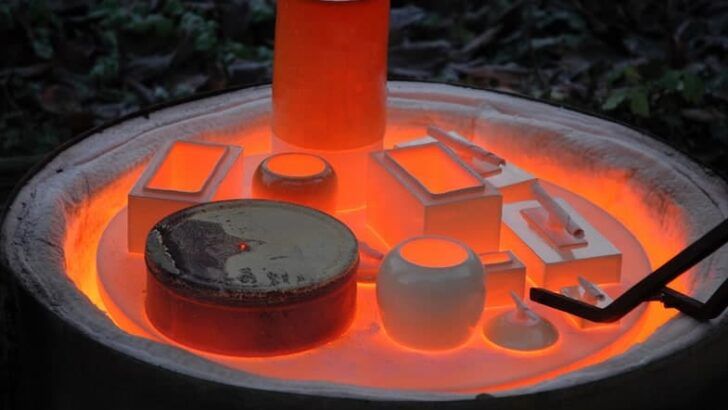How To Make Ganesha With Clay At Home Step By Step?
Ganesha is one of the most important and beloved deities in Hinduism. He is the remover of obstacles and patron of arts, sciences and intellect. Clay idols of Ganesha are commonly made during the festival of Ganesh Chaturthi, when Hindus celebrate and worship Ganesha. Making a clay Ganesha at home is a fun, creative way to celebrate this festival and connect with the Hindu tradition.
Sculpting an idol out of clay allows one to slow down and mindfully reflect on Ganesha’s attributes while shaping each part of the murti. The process becomes a meditation and act of devotion. Displaying a homemade clay murti also adds a unique, personal touch to Ganesh Chaturthi festivities. Furthermore, immersing an eco-friendly clay idol, rather than a plaster of Paris one, at the end of the festival is more environmentally friendly.
Materials Needed
To make a Ganesha idol at home, you will need the following materials:
-
Clay – Air-dry clay or polymer clay work best. You will need about 1-2 pounds.
-
Rolling pin – For rolling out the clay into flat sheets.
-
Knife or clay tools – For sculpting details and cutting shapes.
-
Paints – Acrylic paints work well. You’ll need orange, yellow, red, blue, black, white, and green.
-
Paint brushes – Get a variety of shapes and sizes.
-
Container for water – To clean your paint brushes.
-
Paper towels – For drying brushes and wiping up spills.
-
Newspaper or plastic mat – To protect the surface you are working on.
-
Sculpting tools – Like toothpicks or clay shapers to add details (optional).
Preparing the Clay
Before sculpting your Ganesha idol, it’s important to properly prepare the clay by kneading, softening, and conditioning it. Here are some tips:
– Knead the clay vigorously with your hands for 5-10 minutes. This helps distribute moisture evenly and makes the clay smooth and pliable.
– If the clay is too stiff, add some water a few drops at a time and continue kneading until it reaches the desired consistency. The clay should be soft but not sticky.
– After kneading, form the clay into a ball shape, then pound it on a hard surface. This forces air bubbles to rise to the surface.
– Let the clay rest for 10-15 minutes wrapped in plastic after kneading. This allows the moisture to spread evenly through the clay.
– Before sculpting, knead and soften the clay again with your hands until it is smooth, soft, and ready to be shaped.
– Conditioning the clay properly makes it easier to sculpt fine details and prevents cracking as it dries.
Making the Head
The most important and distinctive part of making a Ganesha statue is sculpting the elephant head. Here are the step-by-step instructions:
Take a ball of clay about the size of a large orange and roll it into an oval shape for the head. Flatten the bottom part slightly.
Use your fingers to pinch and pull out a short trunk from the front of the head. Roll a small ball of clay for the end of the trunk.
For the ears, take two small balls of clay and shape them into wide fan shapes. Attach them to the sides of the head.
Add two small balls of clay for eyes and carefully pinch them to give shape. Mark circles for pupils using a toothpick.
For the mouth, pinch the clay inwards under the trunk. Define the shape of the mouth using a toothpick.
Finally, roll four tiny balls of clay for the tusks and attach two on each side of the mouth, pointing them outwards.
Making the Body
After the head is formed, it’s time to sculpt the body and trunk of Ganesha. Follow these step-by-step instructions:
-
Take a large ball of clay, around the size of an orange, and roll it into an oval shape with your palms. This will be the torso.
-
Use your fingers to pull and pinch the torso, sculpting an oval shape with a rounded belly.
-
For the bottom half, roll a long cylinder of clay about 1 inch thick. Attach this to the bottom of the torso as the legs.
-
Use your fingers to blend the legs smoothly into the torso, creating a seamless transition.
-
Pinch and curve the legs into a crossed, seated position. The right leg should go over the left.
-
For the trunk, roll a thick coil of clay about 6 inches long. Attach this to the upper back of the torso.
-
Curve the trunk gently over the right shoulder and down the front of the torso. Blend it smoothly into the body.
-
Use your fingers to refine the shapes, blending seams and sculpting the belly and chest area.
-
Sit back and examine the body and trunk from all angles. Refine as needed until you are satisfied.
Once the body and trunk are formed, you can move on to sculpting the arms and hands.
Creating the Hands
The hands are one of the most important parts of sculpting an idol of Ganesha. They symbolize his blessings and ability to remove obstacles. When creating the hands:
- Form two small oval shapes for the palms. Ensure they are proportional to the size of the arms and head.
- Use a sculpting tool to indent the thumbs.
- For the right hand, shape it into a mudra pose. The abhaya mudra with the palm facing forward conveys protection and blessing.
- For the left hand, form it holding a laddu or other object like a book. Place the object between the thumb and index finger.
- Define the fingers by gently scoring lines for each digit. Do not fully separate them.
- Refine the shape and details of the fingers and palms using small sculpting tools.
- Smooth any fingerprints or flaws. The palms should have a rounded fullness.
Take your time on the hands to make them graceful and proportional. The mudras are meaningful, so ensuring they are clear is important.
Adding Details
Adding details like clothes, ornaments and the mouse vehicle help bring the Ganesha sculpture to life. Here are some tips for sculpting key details:
Clothes: Use a thin rod or tool to etch simple clothing designs into the clay, like a dhoti around the legs or a shawl over the shoulders. Add some folds and creases to give the clothes more dimension.
Ornaments: Use thin clay ropes to create necklaces, armbands and other jewelry pieces on the body. Attach circular pieces of clay for rings or earrings. Etch patterns into the ornaments if desired.
Crown: Create a simple crown shape out of clay and place it on Ganesha’s head. Add patterns or designs with tools to embellish it.
Mouse Vehicle: Shape a small mouse body with rounded forms. Use clay rods or thin ropes to sculpt legs, tail, ears and other features. Attach the mouse next to Ganesha’s leg once dry.
Take your time with details to enhance the overall sculpture. Work slowly and let elements fully dry before attaching new pieces. With patience, you can create an incredible, ornate Ganesha idol from clay at home.
Letting it Dry
After you’ve sculpted all the pieces of your Ganesha statue, it’s important to let the clay dry properly before painting. Here are some tips for drying your clay sculpture:
Set the clay pieces in a warm, dry area out of direct sunlight. Avoid humid areas like bathrooms or basements, as moisture can prevent the clay from drying fully. An ideal drying spot is a spare room or closet with plenty of airflow.
Allow 1-3 days for drying time depending on the size and thickness of your clay pieces. Turn the pieces periodically so they dry evenly. Test for dryness by touching the surface with your finger – the clay should be smooth and matte, not tacky.
Consider using a fan or dehumidifier to speed up drying time if needed. Just don’t aim a fan directly at the clay, as this can cause cracking. Gentle airflow is best.
Once fully dry, you may want to lightly sand any rough edges with fine grit sandpaper. This readies the surface for a smooth paint application.
Be patient during the drying process for best results. Rushing and painting too soon can cause chipping or peeling later on. Letting the clay dry thoroughly ensures your paint adheres well.
Painting
When painting your Ganesha sculpture, it’s important to follow some key steps and techniques to bring out the details:
1. Start by giving the entire sculpture a base coat of orange paint. Acrylic paints work well for clay. Make sure to cover all surfaces evenly.
2. Next, use a small brush to paint the face. Give Ganesha’s face a flesh tone or light brown color. Carefully paint the eyes, mouth, and other facial features.
3. Paint the hands in an orange/flesh tone as well. Add some brown lines on the palms to indicate folds and give dimension.
4. For a more decorative look, you can paint Ganesha’s belly in a contrasting color like blue or green. This represents prosperity.
5. Use metallic paints like gold, silver or copper to highlight the crown, jewelry, and garments. This adds a nice shine.
6. Add patterns or decorative motifs using complementary colors. Traditional motifs include flowers, vines, peacock feathers, etc.
7. Finish by painting the base or stand a solid color. Allow everything to dry fully before applying a clear sealer or varnish.
With some patience and a steady hand, you can paint a vivid, detailed Ganesha sculpture to display. The colors and patterns really help bring out the beauty in the clay work.
Finishing Touches
Once the Ganesha idol is completely dry, it’s time for some finishing touches to complete your creation. Here are some steps for sealing, varnishing, and displaying your Ganesha:
Seal the idol with a protective sealer or varnish. This will help protect the paint and details from chipping or fading over time. Apply 2-3 thin coats of acrylic sealer, allowing it to fully dry between coats. Stay away from areas like the eyes where you don’t want a glossy shine.
Add any final embellishments if desired. You can glue on things like decorative sequins, glitter, or gems. This is a chance to get creative and customize your Ganesha!
Display your finished idol proudly! Place it on a high shelf or decorate a small altar. Add fresh flowers, leaves, or other decorations around the Ganesha. Keep it away from direct sunlight which can cause fading.
Your homemade Ganesha is now ready to be admired! Feel free to give it as a handmade gift or use it as a centerpiece for celebrations. Just be sure to handle it gently since clay can be fragile.



